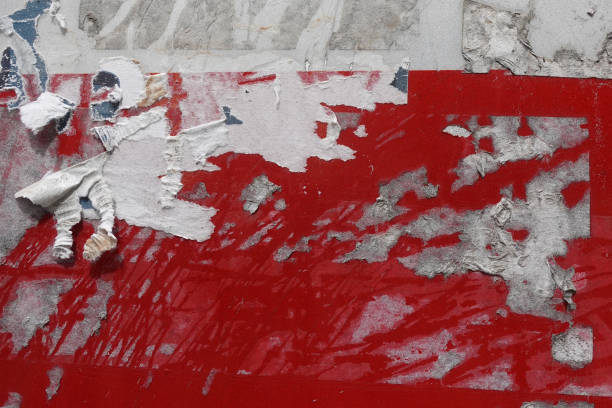Removing sticker residue from different surfaces can be a daunting task if you’re not equipped with the right techniques and tools. From glass to wood, each material requires a unique method to effectively clean it without causing damage. In this article, we’ll explore various tried-and-true methods for eliminating sticker residue, ensuring your surfaces remain pristine.
Removing Sticker Residue from Glass

Cleaning sticker residue from glass can be a relatively simple process. Start by soaking the area with soapy, warm water to loosen the adhesive. Next, use a razor blade at a shallow angle to gently scrape off the residue. For stubborn remnants, apply rubbing alcohol or white vinegar, and scrub with a cloth or sponge. Always wipe the glass dry to prevent streaks and smudges.
Materials Needed:
- Soapy, warm water
- Razor blade
- Rubbing alcohol or white vinegar
- Cloth or sponge
Removing Sticker Residue from Wood
Wood surfaces require extra care to avoid damaging the finish. Firstly, use a hairdryer to warm the adhesive residue, making it easier to peel off. Apply a small amount of olive oil or peanut butter, which can help break down the adhesive. Gently rub the area with a soft cloth, taking care not to scratch the wood. For any remaining residue, try an adhesive remover specifically designed for wood. Be sure to test a small area first.
Pro Tips:
- Test adhesive removers on an inconspicuous area
- Always use a soft cloth to avoid scratches
- Wipe the surface clean after residue removal
Removing Sticker Residue from Plastic
Plastic can be tricky because many solvents may cause it to break down. Begin by using a hairdryer to soften the adhesive. Peel off as much as you can manually. For the remaining residue, apply a paste of baking soda and a small amount of water. Rub the paste into the residue with a cloth, ensuring not to scrub too hard. If necessary, use a non-abrasive dish sponge for tougher spots.
Steps for Success:
- Use a hairdryer to soften the adhesive
- Apply a baking soda and water paste
- Rub gently with a cloth or non-abrasive sponge
Removing Sticker Residue from Metal
Metal surfaces can usually withstand tougher cleaning methods without damage. Use a kitchen sponge moistened with warm, soapy water to start. After loosening the residue, apply a small amount of isopropyl alcohol or an adhesive remover. Scrub the area gently until all residue is gone. Wipe clean with a damp cloth, and dry to prevent watermarks.
What You’ll Need:
- Warm, soapy water
- Kitchen sponge
- Isopropyl alcohol or adhesive remover
- Damp cloth for cleaning
Removing Sticker Residue from Fabric
Removing sticker residue from fabric requires caution to avoid staining or damaging the material. Freeze the fabric by placing it in the freezer for an hour. This makes the adhesive brittle and easier to scrape off with a blunt knife or spoon. Apply a mixture of water and white vinegar, then blot the area with a clean cloth. Avoid scrubbing, as it can spread the residue. Wash the fabric as usual once the residue is gone.
Important Reminder:
- Freeze fabric to make adhesive brittle
- Use a blunt knife or spoon to scrape off residue
- Blot with water and white vinegar mixture
Conclusion
Removing sticker residue can be a hassle, but with the right methods and materials, you can tackle any surface without causing damage. Whether you’re dealing with glass, wood, plastic, metal, or fabric, experiment with these techniques until you find the one that works best for each specific surface. Persistent residue may require repeated treatments, but with patience and care, your surfaces will be residue-free in no time.
Frequently Asked Questions
1. Can I use acetone to remove sticker residue?
Yes, acetone can be effective for removing sticker residue, especially from glass and metal. However, be cautious when using it on plastic or painted surfaces, as it may cause damage.
2. Is there a natural alternative to chemical adhesive removers?
Yes, natural alternatives such as olive oil, peanut butter, baking soda, and vinegar can effectively break down adhesives without the need for harsh chemicals.
3. What should I do if the sticker residue is still visible after cleaning?
If residue remains after cleaning, repeat the process using the same or a different method. Tougher residues might require multiple treatments to remove completely.
4. Will using a razor blade damage my glass surface?
Using a razor blade at a shallow angle with gentle pressure usually won’t damage glass. However, proceed with caution to avoid scratches. Ensure the glass is wet to minimize the risk of damage.
5. Can I use a commercial adhesive remover on all surfaces?
Not all commercial adhesive removers are safe for every surface. Always check the manufacturer’s instructions and test the product on a small, inconspicuous area before applying it to the entire surface.

